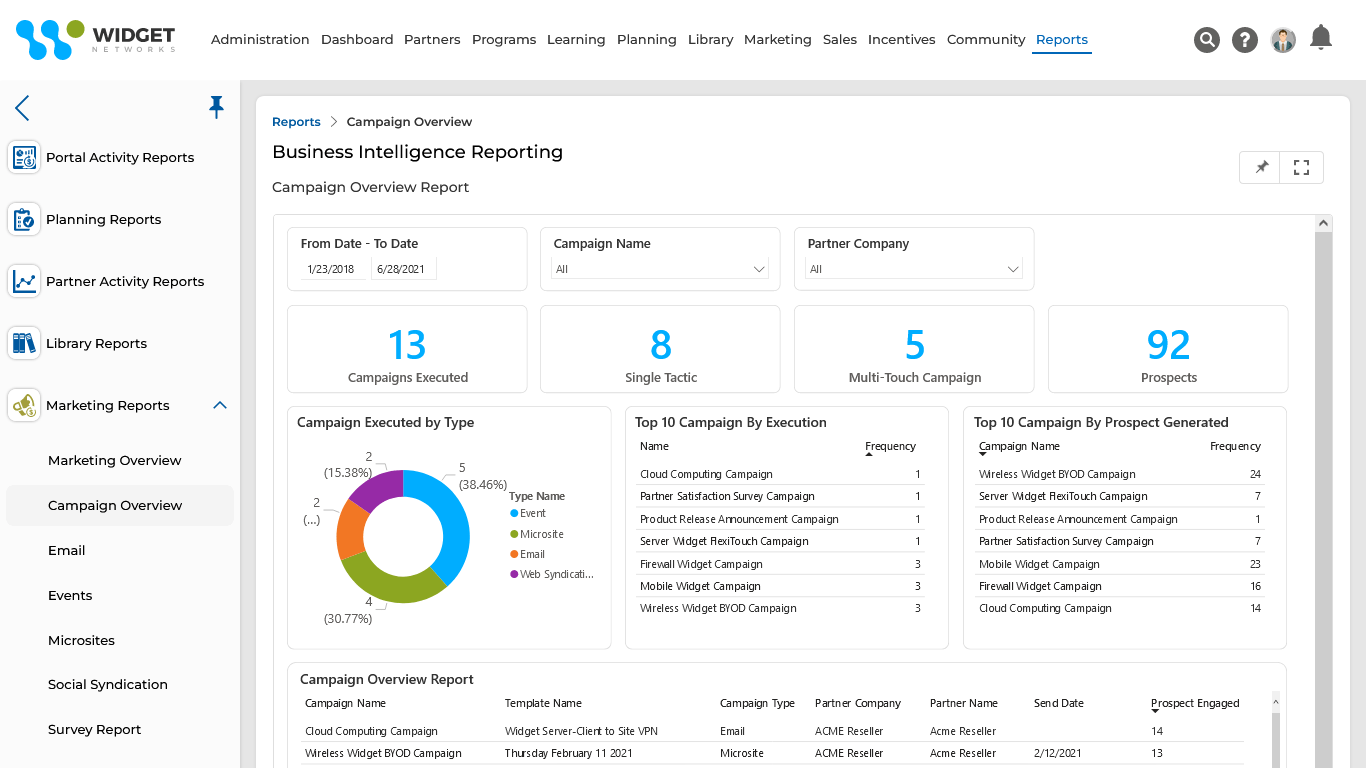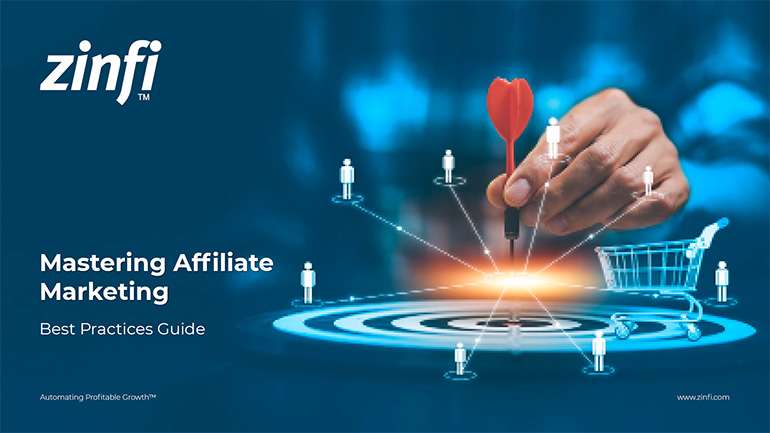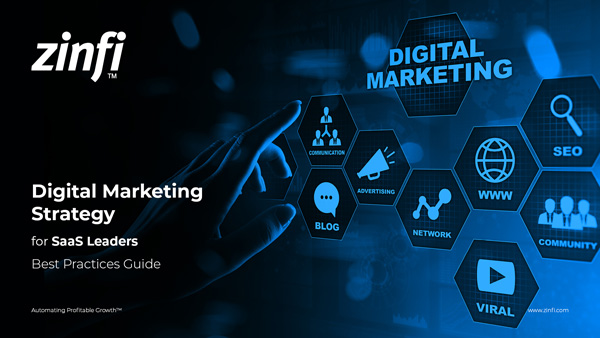Best Practices Articles

Accelerate Revenue at a Lower Cost by Automating Partner-Driven Co-Selling
In a hypercompetitive business world, finding efficient ways to increase revenue and reduce costs is paramount. One strategy that has gained momentum in recent years is co-selling, a collaborative approach to sales involving a partnership between businesses. This article focuses on how automating partner-driven co-selling can significantly accelerate revenue at a lower cost.
Understanding Co-Selling
Co-selling is a mutually beneficial sales strategy in which two or more organizations partner to sell products or services jointly. This strategic collaboration enhances the sales potential for all participating businesses and allows them to share resources, information, and customer networks.
Benefits of Partner-Driven Co-Selling
Partner-driven co-selling is a progressive strategy in the modern business landscape that brings many advantages to businesses adept at capitalizing on it. Let’s explore three key benefits of partner-driven co-selling:
- Enhanced market penetration.
In the current competitive market, companies need to make their presence felt more assertively than ever before. With co-selling, companies can significantly widen their reach, thanks to their partners’ established market presence. This mutually beneficial arrangement allows companies to access new markets and audiences they would otherwise need help to reach independently. Selling through partners will enable companies to establish a strong foothold in these markets, further enhancing market penetration. This increased exposure leads to broader brand awareness, an invaluable asset in business growth and expansion. - Reduced operational costs.
Businesses joining forces can share resources, responsibilities, and risks, thereby reducing costs. Shared marketing campaigns, combined customer service efforts, and joint product development are just a few examples of how partners can pool their resources and reduce individual operational costs. This aspect mainly benefits startups and small businesses, often operating under stringent budget constraints. - Increased sales opportunities.
In a standard business scenario, a company’s customer base is primarily limited by its resources and reach. However, co-selling opens new avenues by allowing companies to target a broader customer base, opening up sales opportunities that may not be feasible for the company to pursue independently. The broader reach of a partner network brings more diversity in customer preferences, allowing businesses to diversify their product or service offerings and further boost sales.
Partner-driven co-selling is a strategic benefit to businesses. Businesses can survive and thrive in today’s highly competitive marketplace by leveraging their partners’ market presence for enhanced market penetration, reducing operational costs through shared resources and responsibilities, and increasing sales opportunities by targeting a more extensive, pooled customer base. The advantages of this innovative sales strategy underscore the importance of intelligent, strategic collaborations in modern business success.
Automating Co-Selling for Increased Efficiency
In today’s business world, co-selling holds tremendous potential for boosting sales and business growth. However, the management of partnerships in co-selling can pose significant challenges. The process can be complex and time-consuming, from coordinating sales strategies to sharing resources and data. This is where automation plays a crucial role, enabling greater efficiency and effectiveness in co-selling. There are several advantages of automation in partner-driven co-selling:
- Automation streamlines labor-intensive processes.
Traditionally, managing multiple partner relationships and sales processes can be labor-intensive, leading to errors and inefficiencies. With automation, these processes are simplified and standardized. Tasks like tracking sales progress, coordinating marketing campaigns, and sharing product updates can be seamlessly managed using automated tools. This frees up valuable time and resources that can be better invested in strategic decision-making and customer engagement. Ultimately, automation drives efficiency across many processes and workflows, ensuring the partnership runs smoothly and optimally.
- Automation enhances the collaboration required in co-selling.
In a co-selling partnership, effective communication and collaboration are paramount. Automated tools like partner relationship management (PRM) applications equip businesses with a centralized platform where partners can share information, plan strategies, resolve conflicts and celebrate wins. These tools support real-time communication and transparent information sharing, fostering trust and alignment between partners. As a result, the partnership becomes more resilient, agile, and effective. - Automation facilitates data-driven decision-making.
In the age of big data, making informed business decisions is not just an advantage; it’s a necessity. Automated PRM tools can collect, process and analyze vast amounts of data from a company’s partner-driven co-selling activities. This may include sales data, customer feedback, market trends, etc. The resulting insights are invaluable for shaping strategies, identifying opportunities, and addressing challenges. With this data at their fingertips, businesses are better equipped to make decisions that enhance the partnership's success.
While co-selling can be challenging to manage, automation offers a powerful solution. By streamlining processes, enhancing collaboration, and enabling data-driven decision-making, automation empowers businesses to maximize benefits. In the competitive landscape of the modern marketplace, this could be the strategic edge that companies need to thrive.
Best Practices for Automating Partner-Driven Co-Selling
Automating partner-driven co-selling has become a strategic imperative as the business world increasingly leans towards collaboration. However, effective automation is not just about adopting the right tools; it also requires a comprehensive approach that involves careful consideration and planning. Let’s look at some best practices that can guide this endeavor.
- Choose the right partners.
This decision shapes the potential and trajectory of your initiative. Your ideal partners should have products or services that complement yours, filling a gap your business doesn’t currently cover. Furthermore, they should have an established market presence and a reputation that can amplify your reach. This teamwork between companies is crucial because it creates a unified and compelling value proposition that can appeal to a broader audience. - Implement a robust platform.
Such a platform should be capable of streamlining all the essential processes involved in selling, from partner onboarding to sales tracking and performance analysis. It should also facilitate communication and collaboration, acting as a central hub where partners can share information, align strategies and resolve conflicts. Moreover, a powerful platform can provide valuable data-based insights, including information about market trends, customer feedback, and performance metrics, which help businesses make informed decisions and continue to improve.
- Train your team on the platform.
Even the most comprehensive PRM platform can only deliver results if your sales and marketing teams are well-versed in using it. Invest time and resources in training your team to understand and leverage the platform. The training should cover the platform's technical aspects and strategic considerations, such as collaborating effectively with partners, addressing customer needs, and capitalizing on sales opportunities. - Continually monitor and analyze performance.
Like any other business strategy, your partner-driven selling initiative should be subject to regular review and adjustment. Use the data and insights from your PRM platform to assess what’s working and what’s not. Identify areas of improvement and opportunities for growth and be open to making necessary changes.
For more information, please check this article.
Best Practices Guidebook
 Top 105 Partner Management Metrics that Matter Guide
Top 105 Partner Management Metrics that Matter GuideDownload Guide
 Mastering PRM Integration Guide
Mastering PRM Integration GuideDownload Guide
 Building a Sales Partner Portal with Salesforce Best Practices
Building a Sales Partner Portal with Salesforce Best PracticesDownload Guide
 Building and Managing Partner Ecosystems Best Practices
Building and Managing Partner Ecosystems Best PracticesDownload Guide
 Mastering Co-Marketing and Co-Selling Best Practices
Mastering Co-Marketing and Co-Selling Best PracticesDownload Guide
 Transforming Partner Ecosystems Best Practices
Transforming Partner Ecosystems Best PracticesDownload Guide
 Mastering Partner Ecosystems Best Practices
Mastering Partner Ecosystems Best PracticesDownload Guide
 Mastering Partner Onboarding Best Practices
Mastering Partner Onboarding Best PracticesDownload Guide
 Partner Ecosystem Management Best Practices
Partner Ecosystem Management Best PracticesDownload Guide
 B2B Marketing in the Age of Intelligence Best Practices
B2B Marketing in the Age of Intelligence Best PracticesDownload Guide
 Multi-Partner Co-Selling Best Practices
Multi-Partner Co-Selling Best PracticesDownload Guide
 A Guide to Enhance Channel Sales Efficiency
A Guide to Enhance Channel Sales EfficiencyDownload Guide
 Mastering Affiliate Marketing Best Practices
Mastering Affiliate Marketing Best PracticesDownload Guide
 The Ultimate Guide to Channel Partner Management
The Ultimate Guide to Channel Partner ManagementDownload Guide
 Top 10 Trends in 2024 Partner Relationship Management
Top 10 Trends in 2024 Partner Relationship ManagementDownload Guide
 Building Bridges: Best Practices in PRM
Building Bridges: Best Practices in PRMDownload Guide
 Mastering Channel Marketing Best Practices
Mastering Channel Marketing Best PracticesDownload Guide
 Digital Marketing Strategy for SaaS Leaders
Digital Marketing Strategy for SaaS LeadersDownload Guide







